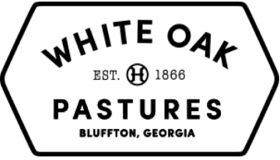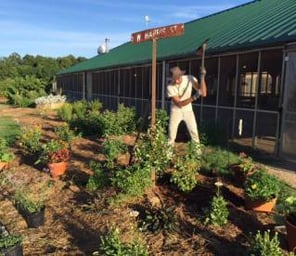
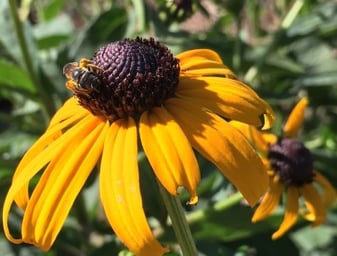
Bees are responsible for a lot more than just producing that sweet golden honey we love. Did you know that on average, we rely on bees to pollinate every third bite of food we eat?
This is one of the fascinating facts our beekeepers shared at our recent beekeeping workshop here on the farm. We welcomed folks from all over Georgia, as well as Alabama, Mississippi, and Kentucky, to learn about honey bee biology and behavior, hive maintenance, honey harvesting, and the crucial ecological role bees play.
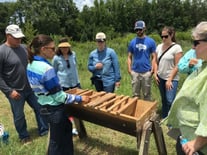
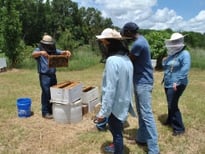
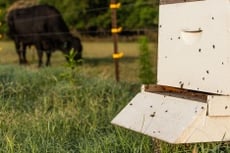
It’s important to do what we can to promote pollinator well-being. Whether honey bees, flies, wasps, beetles, or butterflies, we depend on insect pollinators for much of our food and our health. In case you missed our workshop, here are some tips from our organic garden crew on how we can all help bees by creating a bee-friendly environment in our own backyards.
- Let areas of your property lie fallow. This will encourage the growth of natural grasses and wildflowers, and provide habitat and food for pollinators.
- Plant flowers that are good sources of nutrition for honeybees. Fragrant herbs are a favorite. You can find lists of plants native to the Southeast that encourage pollinator habitat here and here.
- Plant a fruit and vegetable garden. Growing your own food will let you appreciate the work pollinators do, and will provide them with a variety to choose from.
- Don’t use pesticides, herbicides, or fungicides. Even organic pesticides can be harmful to bees. When buying plants to put out in your garden, make sure they haven’t been treated with pesticides, either. If spraying is a must, do so at times when bees are not out foraging and when flowers are closed (late evening is best).
- Provide a water source, whether a pond or a puddle, where thirsty bees can fill up. Just watch out for mosquitoes!
- Encourage native mason bees by building them a bee house for cover and a place to raise their young.
- Lawns that are highly managed and manicured do virtually nothing for pollinators. Jazz up your lawn with some low-growing wildflowers such as dandelion and white clover to make it a bee hotspot.
